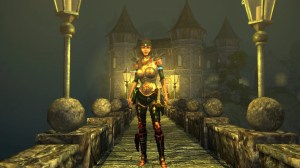CBS All Access’s adaptation of Stephen King’s The Stand wrapped up this week with a new “coda” written by King himself that sort of closes out the story in a fresh, new way by answering some questions and opening the door for others. In a sense, though, the real finale of the adaptation is told throughout not only this week’s “The Circle Closes” but last week’s penultimate episode, “The Stand” with both episodes offering some significant departures from the source material. Now, series executive producer Benjamin Cavell, some of those changes.
Videos by ComicBook.com
Most of the major changes occurred in the penultimate episode, “The Stand”, with the death of Glen Bateman (Greg Kinnear) being of particular interest. In the novel, he’s killed in his jail cell after antagonizing Randall Flagg (Alexander Skarsgard) but the episode changes thing by having him killed in the courtroom during a farce trial. Cavell explained to Entertainment Weekly that the shift is one that made more sense and allowed them to “weaken” Flagg as an antagonist.
“The Scene in the book is very memorable, but we had some questions about it. One is just about Lloyd Henreid’s (Nat Wolff) arc. In the book, when we meet him, he’s killing people and does not have an issue with it,” Cavell said. “So I always questioned why he hesitated in the book when he was ordered to kill Glen. Part of this is also a testament to Nat Wolff and his commitment and willingness to work with us on crafting an arc for that character.”
He continued, “We put Lloyd in a position where he’s never killed anybody and doesn’t seem to want to and wanted to set this up as a bigger deal for him. It also always bothered me that in the book Glen dies in this private moment Lloyd and Flagg. I just felt like there was much more consequence in him defying Flagg in front of his people who are obsessed with this charismatic authoritarian strongman – which is a figure that has been ascendant in our recent history and how they’re fearful of looking weak in front of their audience. It’s the beginning of our protagonists really bringing about the end of Flagg through their defiance. By murdering this guy in front of everybody it starts to weaken him. You see him levitating and he unexpectedly sinks to the floor. They set up the conditions necessary for Flagg to ultimately be – I hesitate to use the word ‘defeat’ – but vanquished.”
It’s an interesting turn for the story, one that adds perhaps more layers to things while the choice to remove another aspect — Stu (James Marsden) and Tom’s (Brad William Henke) journey back to Boulder is not shown in the series — streamlines another aspect. One element, however, that the series kept but also made fresh was the Hand of God, a literal deus ex machina that detonates the bomb in Vegas. Cavell said that they decided to give the mechanism a bit of nuance — and took inspiration from the cosmos.
“It was quite possibly the thing that we discussed most. Jake Braver, our VFX supervisor, I talked endlessly about it. Our goal was to get it to the point where if you knew the book and you’d wanted it to look like a hand, it could be a hand, but that if that would make you crazy and would take you out of it, then you didn’t have to see it that way,” Cavell said. “The thing that we didn’t want under any circumstances was that sort of Monty Python cartoon hand out of the sky. Our big touchstone was this photograph from the Hubble telescope called the Pillars of Creation, which is like a very distant Nebula but is naturally occurring. If you sort of look at it in the right way, and you’re willing to kind of make the leap, it really does look like fingers outstretched. But it doesn’t have to.”
All episodes of The Stand are now streaming on CBS All Access.








